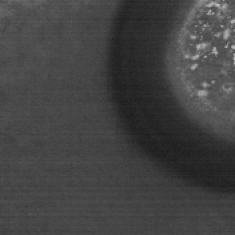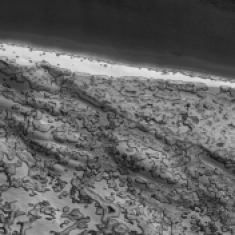6 months of Planet Four: Terrains – Top 20 favorites of 2015
Today marks 6 months of Planet Four: Terrains. We thought we’d share the 20th most favorited images since launch. You can view the images below or check them out on in this collection.
Click any of the images below and then you use left and right arrow keys to peruse the whole set.
Wishing you a fantastic end to 2015 and great start to 2016!
Planet Four 2015 Favorites
As 2015 winds down, we thought we’d share some of the most favorited Planet Four images of the year. You can view the images below in the slide show or check them out on Talk here.
Happy Holidays and Happy New Year from the Planet Four Team!
(and if you find some spare time before 2016 there are lots of images still in need of review at http://www.planetfour.org)
December Science Team Call
I thought for this week’s blog post, I would talk a bit more about what happened in last week’s science team call and what we’ve been up to over the past month or so. Last month was the Division of Planetary Sciences meeting where for the first time, Michael, Candy, Anya, and I have been in a room together. So we had dinner and went through the paper draft and what’s left to do in terms of getting the paper out. Michael’s poster at the meeting showed the first results of the full pipeline run identifying fans from blotches. So the results of that was also discussed during our meeting.
Most of the time we rely on email and team calls to work together. Right now every two weeks we have an hour call between Michael, Anya, Candy and myself. I think they’ve been really important in helping us work together over such long distances as I’m based in Taipei, Candy is based in Utah, and Michael and Anya live in Colorado. It’s our chance to update each other, talk over issues and stumbling blocks, and talk about the data.
Michael’s been hard at work this year getting all the pieces in place to make the final catalog for Season 1 and Season 2. Overall the software pipeline Michael has built works incredibly well, but we still need to check all the edge cases where we might need to tweak the process. I took the task of going through and checking a subset of subjects with the identified fans and blotches plotted compared to the individual volunteer markings to look for any anomalies or issues with the clustering pipeline. The algorithm Michael’s developed takes your classifications and combines them together to identify where there are fans and blotches and based on how many people used which tool (fan or blotch) we determine if the dark region is a fan or a blotch. I did this review shortly after DPS meeting, and Michael and I filled in the Candy and Anya during the call.
Michael’s now working on implementing some changes to his pipeline, and we’ll take a look at those result soon. Now that we’ve got this first pass from the full pipeline, we can start building the codes to make the plots we want for the first paper and look at the distributions of fans and blotches over time and across the different target regions in Seasons 2 and 3. We spent a good chunk of this month’s call talking about what plots would be the most diagnostic. We also talked about the strategy we wanted to use to compare images with different binning/image resolutions. Anya and Michael are going to work on that over the coming weeks. I’ve got some tasks assigned for the next call as well, including using Michael’s catalog to compare to the gold standard dataset the science team generated.
We also talked about the new text Michael wrote in the paper draft, and set a deadline for the rest of us to read it and give back comments. The next full team call will be in early/mid January. We’re getting closer and closer to having a complete Planet Four science paper ready to submit to a journal.It’s nice to see the progress and watch everything coming together. Thanks for your continued clicks. The hardest part is getting the pipeline complete. Once we have this huge step completed, it means we can rapidly produce catalogs for the entire Planet Four classification database and start working on comparing the mapped observations from 4 Mars years of Manhattan and Inca City that you’ve marked. I’m really looking forward to seeing what we learn from that.
Planet Four Challenge Part 2
The Planet Four Challenge is off to a great start towards crossing the 5 million classification mark! As a way to extend our thanks to each and everyone who has contributed to the project, we’re holding a question and answer session tomorrow. The Planet Four Team will be answering any and all of your posted questions about Mars and Planet Four on Zooniverse Talk. Ask away in this thread, and the team will be standing by to answer throughout the day tomorrow.
‘Tis the Season for the Planet Four Challenge
‘Tis the season for citizen science! Take a break from the mad dash of the holiday season and end of the year celebrations by exploring the Red Planet. As part of the Zooniverse’s Advent Calendar, join us this week for the Planet Four Challenge. From December 14th to December 19th, we’re asking for your help to get Planet Four to cross the 5 million mark before the end of 2015.
Help explore Giza, Ithaca, Starfish, and a few other regions on the South Pole from Season 1. Let’s get Planet Four off to a great start for 2016. If everyone mapped a few images, we would get to the 180,000 classifications needed in no time! If you’re looking for background music while classifying, look no further. The Zooniverse has you covered.
Join us for the Planet Four Challenge and map a seasonal fan or two at http://www.planetfour.org! And don’t forget you can follow along on our progress towards 5 million clicks exploring Mars on Twitter, Facebook, and Google+.




















